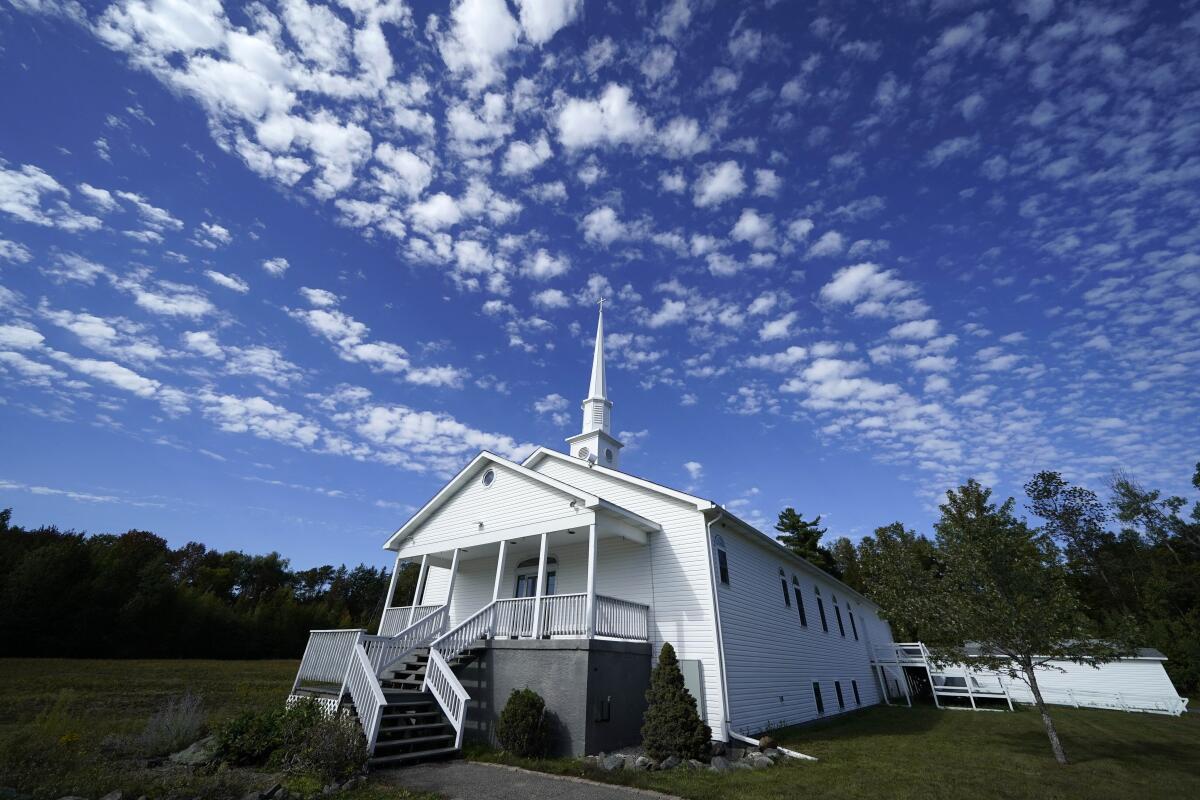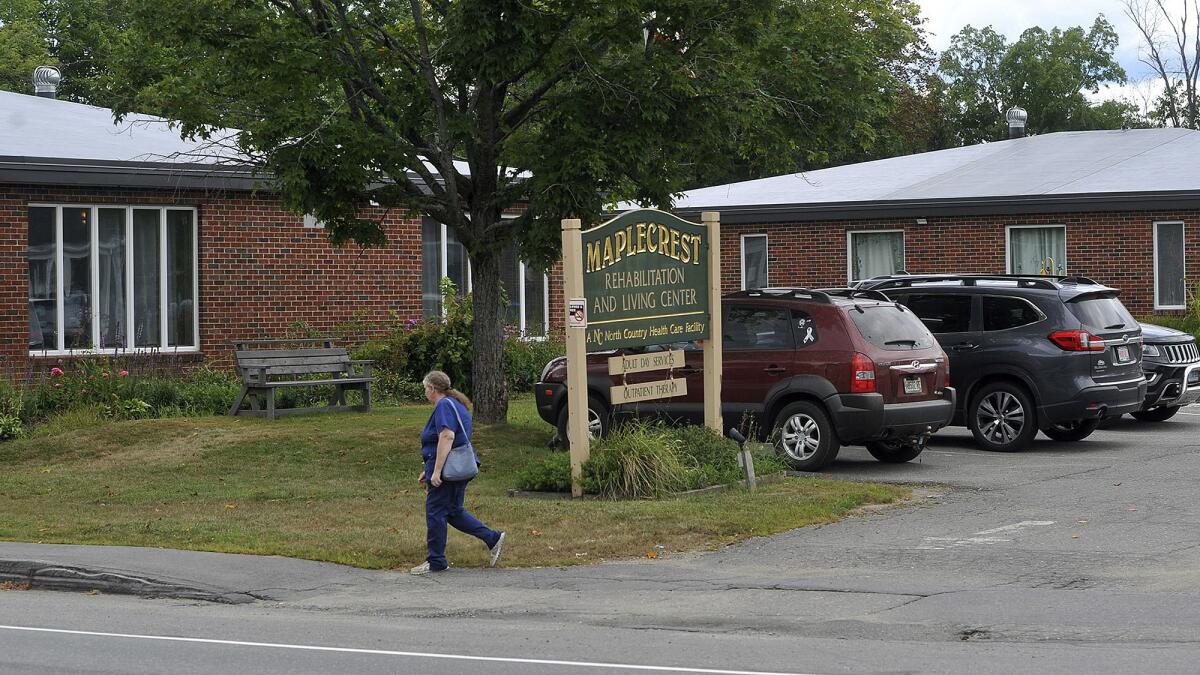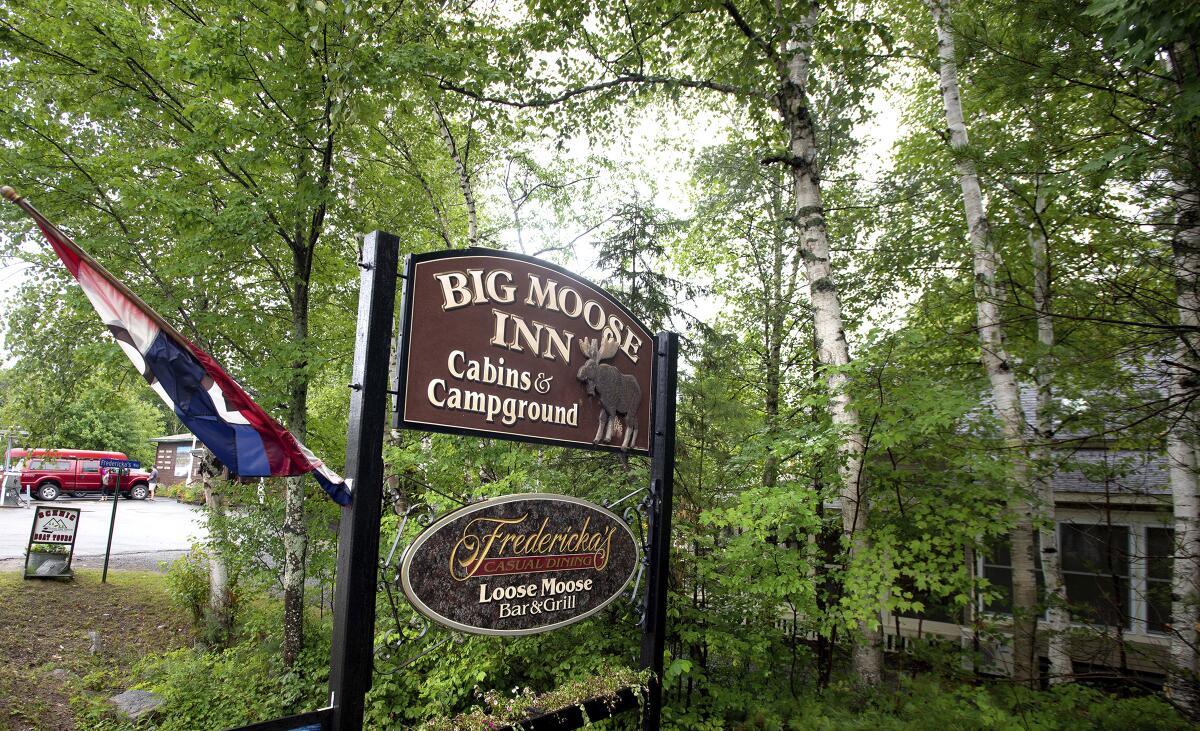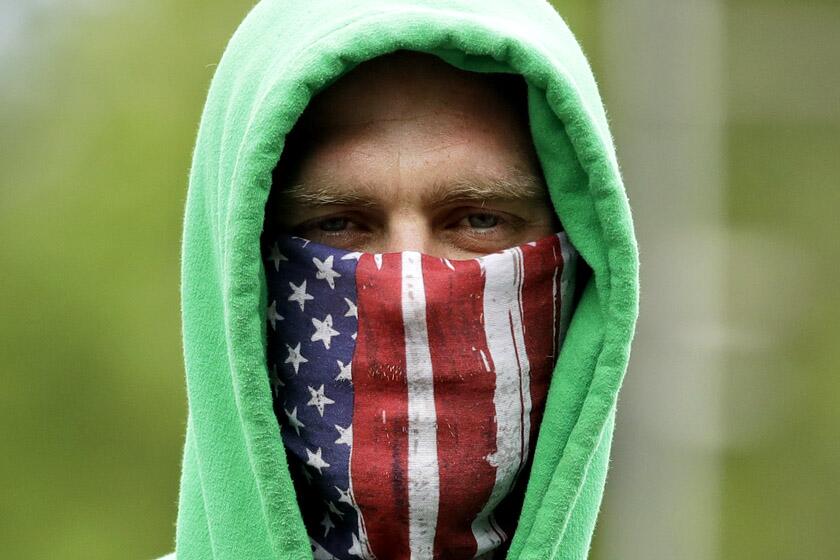Karen Kaplan covers science and medical research for the Los Angeles Times. She has been a member of the science team since 2005, including 13 years as an editor. Her first decade at The Times was spent covering technology in the Business section as both a reporter and editor. She grew up in San Diego and is a graduate of MIT and Columbia University.
1
If you want to know why public health officials are so nervous about how much worse the COVID-19 pandemic will get as the holiday season unfolds, consider what happened after a single, smallish wedding reception that took place this summer in rural Maine.
Only 55 people attended the Aug. 7 reception at the Big Moose Inn in Millinocket. But one of those guests arrived with a coronavirus infection. Over the next 38 days, the virus spread to 176 other people. Seven of them died.
None of the victims who lost their lives had attended the party.
In a new report, investigators from the Maine Center for Disease Control and Prevention explain how a well-meaning celebration with family and friends wound up causing so much suffering and death throughout the state in such a short period of time.
Can you have Thanksgiving during the COVID-19 pandemic? Researchers have created an interactive map that estimates the risk you’ll face in any county.
Although the pandemic was 5 months old at the time of the wedding, few of those who found themselves in the virus’ path were taking the kinds of precautions that could have reduced their risk of infection. That indifference to public health guidelines appears to have played a key role in making the reception a super-spreading event, according to the report.
It’s something to keep in mind when you hear health officials urge members of the public to put their holiday traditions on hold this year. As you take in the details of the outbreak, imagine swapping “Thanksgiving dinner” or “Christmas party” for “wedding reception” and see whether it changes your thinking about your own holiday plans.
Here’s what happened:
2
Aug. 6
A couple traveled from California to Maine to get married at a church in East Millinocket. The reception would be held about 16 miles away in Millinocket, a town in Penobscot County with about 4,500 residents. Five members of the groom’s family came with them.

The Tri Town Baptist Church in East Millinocket, Maine.
(Robert F. Bukaty / Associated Press)
At the time, Millinocket had not reported a single case of COVID-19. The visitors kept that streak alive — all seven of them tested negative for the coronavirus shortly after arriving in the Pine Tree State.
3
Aug. 7
The couple held their wedding reception in an event room at the Big Moose Inn. Although Maine prohibited indoor gatherings of more than 50 people, 55 guests were in attendance. They were seated around 10 tables, in groups of four to six people.
Employees of the inn took each guest’s temperature when they arrived. No fevers were reported.
Gov. Gavin Newsom has announced a stay-at-home order affecting most of California.
Signs posted by the inn informed guests that they were required to wear face masks, but “guests did not comply,” according to the report. They also disregarded advice to remain at least six feet away from people who weren’t members of their own households.
All Big Moose Inn employees wore masks.
4
Aug. 8
One of the wedding guests came down with a “fever, runny nose, cough, and fatigue,” according to the report. The guest, who lived in Maine and became known as “the index patient,” was later tested for a coronavirus infection.
5
Aug. 10
Another person who had performed as a musician at the reception came down with a cough. Nonetheless, this person attended an in-person meeting at a school in East Millinocket.
6
Aug. 11
A worker at the Maplecrest Rehabilitation and Living Center, a long-term-care facility 100 miles from Millinocket in Madison, Maine, came down with a “fever, chills, cough, myalgia, runny nose, and headache” — all symptoms consistent with COVID-19. This worker’s child had attended the wedding reception, and the two had been in close contact in the days right afterward.

The Maplecrest Rehabilitation and Living Center in Madison, Maine.
(Rich Abrahamson / The Central Maine Morning Sentinel )
Despite having obvious signs of illness, the Maplecrest employee went to work that day, and the next.
7
Aug. 13
The coronavirus test result for the index patient came in. It was positive.
The Maplecrest worker was tested for a coronavirus infection.
8
Aug. 14
Over the course of a week, 24 people in Penobscot County who had attended the wedding reception tested positive for the coronavirus. In response, the Maine Center for Disease Control and Prevention, or MeCDC, launched its investigation of the event.
One of the wedding guests came down with a cough, sore throat, runny nose, muscle aches and a loss of his sense of taste. This person worked more than 200 miles away at the York County Jail.
Meanwhile, a school staffer who had been in contact with the moonlighting musician was diagnosed with COVID-19.
9
Aug. 15
The York County Jail employee showed up for an eight-hour shift despite having COVID-19 symptoms. It was the first of five consecutive days of work for the employee, who spent time at two separate “correctional facility housing units.”
10
Aug. 17
Another school staffer was diagnosed with COVID-19.
All school employees who had been exposed to the moonlighting musician or either of the two people the musician subsequently infected went into quarantine or isolation. As a result, local schools had to push back their first day by two weeks.
11
Aug. 18
The coronavirus test for the worker at the Maplecrest long-term care facility came back positive.
12
Aug. 19
All Maplecrest residents and staff were tested for the coronavirus.
The wedding reception guest who worked for the York County Jail was officially diagnosed with COVID-19. So were three other staffers there. Officials from the MeCDC began an investigation of the jail outbreak.
13
Aug. 20
The number of confirmed infections tied to the wedding reception rose to 30. They included 27 of the 55 reception guests — 49% of those in attendance — as well as the musician, a staff member at the inn, and a customer at the inn who was not there for the wedding party.

The Big Moose Inn in Millinocket, Maine.
(Linda Coan O’Kresik/The Bangor Daily News via Associated Press)
Over time, health officials determined that the guests who were infected at the reception spread the virus to another 17 people, who in turn spread it to 10 more people.
Overall, 90% of those connected to the wedding reception outbreak developed COVID-19 symptoms. Four people — all of them at least 75 years old and with underlying medical conditions — wound up in the hospital. None of them had attended the wedding reception.
One of the hospitalized patients died.
14
Aug. 21
The MeCDC launched an investigation of the Maplecrest long-term-care facility.
15
Sept. 1
By the time September began, 18 employees of the York County Jail joined the initial four staffers in testing positive for coronavirus infections. Forty-six inmates had tested positive for the virus as well.
16
Sept. 4
Officials from the MeCDC and the Maine Department of Corrections visited the York jail and discovered that, despite the size of the outbreak, “the facility had not implemented daily symptom screening for staff members or enforced regular use of masks.”
If nearly all Americans would wear face masks when they leave their homes, they could save over 100,000 lives by the end of February, a study says.
Ultimately, the wedding reception guest who worked at the jail began a chain of transmission that led to 82 additional infections. The MeCDC said that 42% of the correctional facility workers caught the virus, as did 41% of inmates. The outbreak also spread to workers’ homes, infecting 16 of their “household contacts.”
The bulk of these cases — 76% — involved people ages 30 to 59. Although 83% of the staff members who became infected developed symptoms of COVID-19, only 23% of inmates became sick.
None of the people connected to the jail outbreak were hospitalized, and none died.
17
Sept. 11
The investigation at the Maplecrest long-term-care facility turned up coronavirus infections in 24 of the 44 residents (that’s 55%) and in 14 out of 76 staffers (that’s 18%).
Two-thirds of the facility’s residents were at least 75 years old, and 88% of them had at least one preexisting medical condition that could have made them more vulnerable to the virus.
Six of the residents ultimately died of COVID-19. All of them were at least 60 years old and had at least one preexisting medical condition.
When all was said and done, 177 people were infected, and seven of them were dead.
To the Maine health officials who wrote the report, the lessons are clear: Wear a mask. Practice social distancing. And for goodness sake, don’t go to work when you are sick.
“Community gatherings such as weddings, birthday parties, church events, and funerals have the potential to be SARS-CoV-2 super-spreading events,” they remind readers. And the risk is higher when people gather indoors, they added — something that is likely to occur over the winter holidays.
The findings appear in Friday’s edition of the Morbidity and Mortality Weekly Report, a publication of the U.S. Centers for Disease Control and Prevention.







